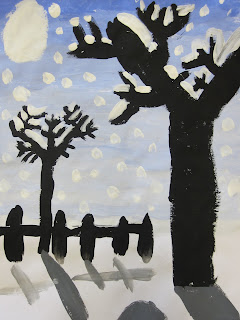

I have seen this lesson on several blogs. Students draw abstract portraits based on Picasso's. They begin by drawing a circle and draw a profile line down the center. We discuss how he shows different points of view at once and how to draw features from the front and side. Students then divide up their drawing using a large figure 8 and horizontal and vertical lines. Students use different colors and patterns to fill in the spaces.







